Introduction
As the digital landscape continues to evolve, Application Programming Interfaces (APIs) are becoming increasingly vital components of software architecture. They act as conduits for seamless service integration and data exchange. To ensure the reliability and efficiency of APIs, systematic and thorough testing is essential.
This is where tools like Postman come into play, offering a user-friendly interface and a suite of features that enable developers and testers to optimize API performance.nnAPI testing is comparable to regular health checks for software, confirming that APIs are performing correctly and securely. Utilizing REST API testing tools like Postman streamlines this process by automating the creation and execution of test scripts. These scripts validate responses against expected outcomes and can be integrated into Continuous Integration/Continuous Deployment (CI/CD) pipelines for ongoing assessment.nnAPI testing is not just about confirming functionality; it's also crucial for assessing performance under varying loads.
For example, in the case of a streaming service, developers must ensure that a movie begins playback swiftly upon user request and that the API can scale to support an expanding user base without compromising speed or quality.nnLeading companies such as Adobe, JetBlue, FedEx, and Microsoft recognize the importance of robust API testing. They actively participate in tech communities and uphold ethical practices. With the right approach and tools, API test automation can significantly enhance the performance, security, and reliability of APIs, leading to an improved user experience and ensuring the smooth operation of software applications.
Why Use REST API Testing Tools
As the digital landscape evolves, Application Programming Interfaces (APIs) are increasingly becoming foundational components of software architecture, acting as essential conduits for seamless service integration and data exchange. To guarantee the reliability and efficiency of APIs, systematic and thorough testing is indispensable. This is where tools like Postman come into play, offering a user-friendly interface and a suite of features that enable developers and testers to ensure APIs are not only operational but optimized for performance.
API testing is akin to conducting regular health checks for your software, confirming that APIs are performing correctly and securely. Utilizing REST API testing tools streamlines this process by automating the creation and execution of test scripts. These scripts, which use HTTP requests to interact with the API, help validate responses against expected outcomes and can be integrated into Continuous Integration/Continuous Deployment (CI/CD) pipelines for ongoing assessment.
Moreover, API testing isn't just about confirming functionality; it's also crucial for assessing performance under varying loads. Take the example of a streaming service: developers must verify how swiftly a movie begins playback upon user request and ensure the API can scale to support an expanding user base without compromising speed or quality.
Industry leaders, including Adobe, JetBlue, FedEx, and Microsoft, recognize the importance of robust API testing, as reflected by their participation in active tech communities and commitment to ethical practices. The conversation around API testing continues, with ongoing series of articles and discussions shedding light on the use of popular frameworks and the core concepts behind APIs, which act as gateways managing the interface between users and servers.
With the right approach and tools, API test automation can significantly enhance the performance, security, and reliability of APIs, which in turn improves the overall user experience and ensures the smooth operation of software applications.
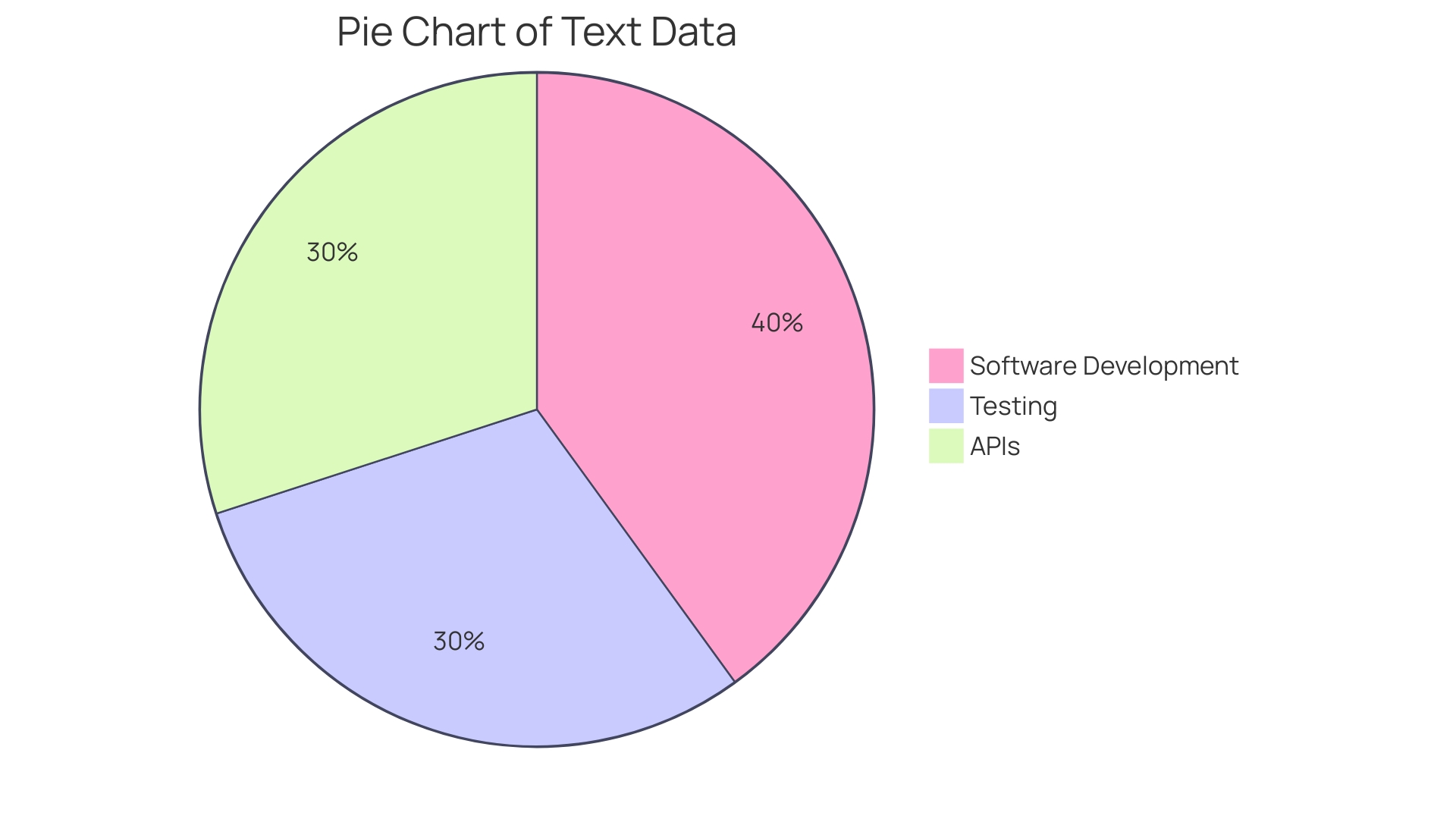
How to Choose the Right REST API Testing Tool
Choosing the most suitable REST API testing tool is a pivotal step that can greatly influence the efficiency of your testing process. You'll want to ensure that the tool integrates smoothly with your project's ecosystem and proves user-friendly to your team. Adequate documentation and robust support are essential for overcoming challenges during testing.
Additionally, the tool should offer features that cater to your unique testing demands, ultimately enhancing your workflow and contributing to a more streamlined testing experience. As we delve into the diverse world of API testing, remember that the right tool not only conforms to your testing needs but also contributes to improved API performance and a better end-user experience.
Top 10 REST API Testing Tools
Postman stands out as an indispensable API development and testing tool, renowned for its user-friendly interface and comprehensive capabilities that cater to both novices and seasoned developers. It fundamentally transforms the API interaction experience, rendering the creation, testing, and management of API requests a seamless endeavor.
Postman's origin story is as compelling as its features; what began as a modest Chrome extension in 2012 has since evolved into a tool that addresses the intricate challenges faced by developers dealing with HTTP requests and responses. It's not just a standalone application; it's a pivotal part of the development process for millions of developers and numerous global companies.
The practicality of Postman is echoed by the experiences of TotalEnergies Digital Factory (TDF), a subsidiary of TotalEnergies. TDF, which has launched over 80 solutions across 25 countries since its inception in 2020, relies heavily on APIs to modernize legacy information systems. The unanimous agreement among developers at TDF that Postman facilitates effortless collaboration is a testament to its integral role in their workflow.
Moreover, Postman's relevance is underscored by its adoption in critical sectors like healthcare, where accuracy and quality are paramount. For instance, as part of an innovation project with Oslo City's healthcare department, a generic test infrastructure was developed to enhance the quality of healthcare IoT applications through rigorous and automated testing.
To navigate the burgeoning landscape of API tools, which now encompasses more than 50 notable contenders, it is vital to assess each tool's features, pricing, support, and more. This comprehensive evaluation is designed to assist organizations in identifying the API tool that best aligns with their specific needs, whether for testing, documentation, design, or management.
Finally, as we delve into the world of API testing, it's crucial to remember the words that encapsulate its significance: APIs not only streamline our digital existence but also necessitate regular scrutiny to ensure their functionality and security. The interval between such inspections, or the testing cycle, can be flexibly adjusted to suit the demands of the situation at hand.
Tool 1: [Tool Name]
Postman stands out in the world of API development and testing with its ability to construct and send various HTTP requests, supporting a myriad of request methods and parameters. It goes further by offering clear visualization and analysis of server responses, including status, headers, and bodies. This functionality is integral as APIs become increasingly central to software development, enabling communication and data interchange between diverse systems and supporting the integration of complex services.
With the digital transformation at the heart of its strategy, TotalEnergies Digital Factory (TDF) relies on APIs for modernizing legacy information systems. The commitment of TDF's developers to Postman is unanimous, with 100% affirming its efficacy in facilitating effortless collaboration. This endorsement echoes the sentiments of professionals across 32,000+ organizations worldwide, including heavyweights like Adobe and Microsoft, who rely on Postman’s robust testing capabilities.
Understanding the pivotal role of testing in software development is crucial. Statistics reveal that 80% of developers recognize the significance of testing in their projects. Automated testing, in particular, is adopted by 58% of those involved in testing activities, highlighting the shift towards efficiency and reliability.
In this landscape, Postman emerges as a powerful ally, with its comprehensive features that not only streamline the development process but also enhance software quality and performance.
In the realm of functional testing, Postman is a force to be reckoned with. It simulates user interactions and validates software functionality against specific requirements, reducing the software failure rate, which studies indicate can range between 50-80%. The tool’s automation of test cases, generation of test data, and detailed reporting mechanisms are critical for ensuring that all functions of the software work properly.
For organizations like TotalEnergies, embracing such advanced tools is part of a larger strategy to provide sustainable, reliable, and accessible energy solutions. TDF, leveraging Postman, has developed over 80 digital solutions since its inception in 2020, reflecting a commitment to innovation and operational excellence that resonates across 25 countries.
Tool 2: [Tool Name]
Recognized for its simplicity and user-friendliness, Tool 2 stands out as a favored REST API testing tool among developers and quality assurance professionals alike. With its intuitive interface, users can swiftly construct and execute testing scenarios to verify API functionalities. Beyond basic testing, Tool 2 equips users with sophisticated debugging capabilities and an adept error handling mechanism.
These features collectively ensure that testing is not just about finding flaws but also about resolving them efficiently, thereby enhancing the software's reliability and performance.
In the realm of API Automation Testing, where the objective is to rigorously evaluate the APIs—software's fundamental components—tools like Tool 2 are indispensable. They enable the creation of test scripts that mimic various interactions with the API, examining responses against expected outcomes to ensure the system behaves correctly. Execution of these tests can be automated at set intervals or integrated within CI/CD pipelines, crucial for maintaining high-quality software in a fast-paced development environment.
Tool 2's capacity to streamline the testing process is echoed by the experiences of industry giants such as Adobe, JetBlue, FedEx, and Microsoft, all of which are part of a community actively using such tools to navigate the technology-driven world. Moreover, a commitment to ethical corporate practices and social responsibility is shared among these organizations, highlighting the role of responsible testing practices in promoting societal good.
With the increasing importance of web applications and APIs in software development, the selection of appropriate testing tools becomes critical. Tool 2, with its ease of use and robust testing features, ensures developers can effectively validate functionality, performance, and security aspects of APIs. Furthermore, a tool that allows for the clear documentation of test cases and results is invaluable, as it aids in knowledge sharing and improves overall understanding among stakeholders.
The ability to convey complex testing procedures with clarity and simplicity cannot be overstated, as it significantly contributes to the ease of learning and usability for developers engaging with APIs.
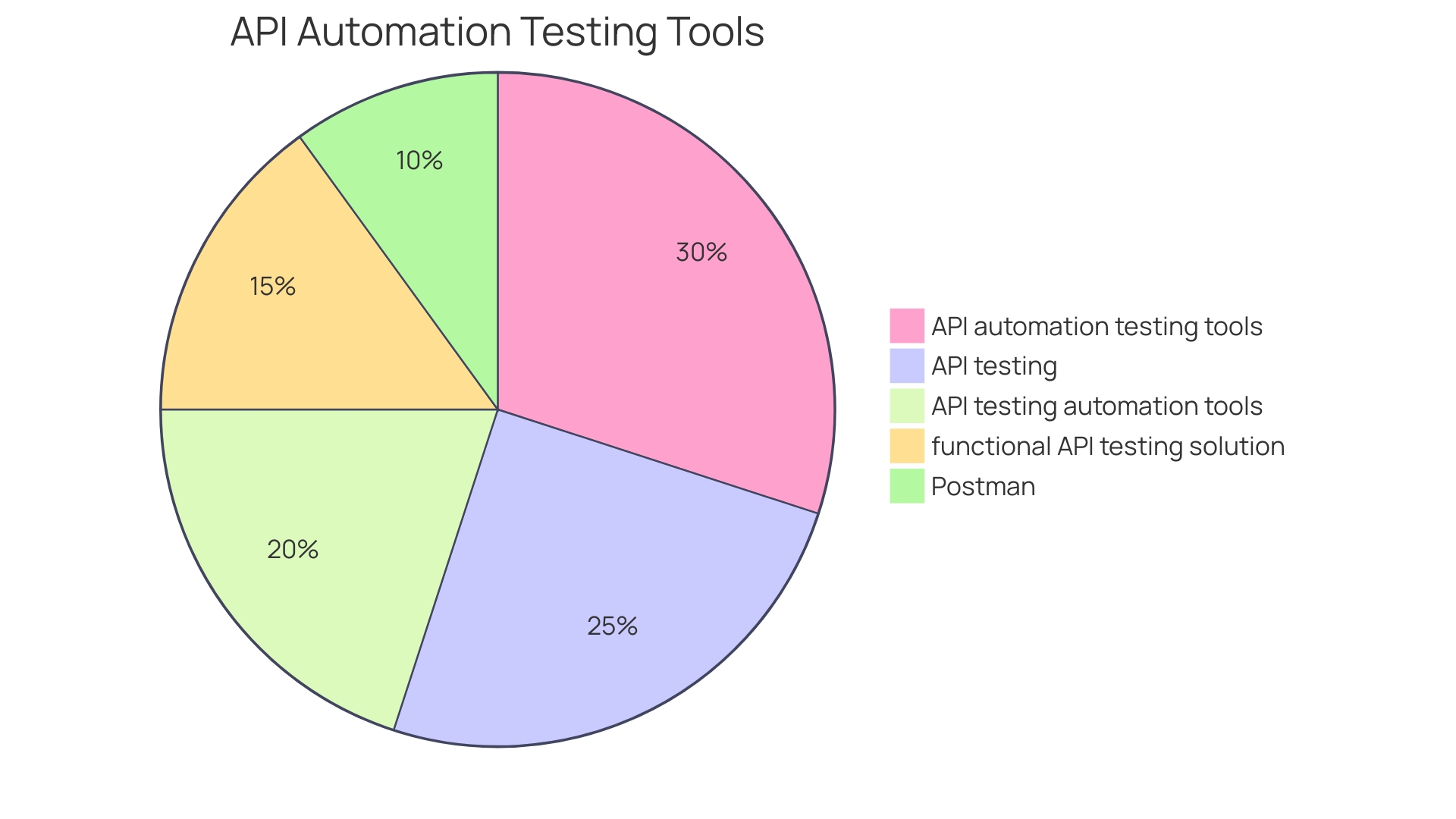
Tool 3: [Tool Name]
Postman stands out as a premier REST API testing tool with its user-friendly interface and extensive features. It excels in verifying the functionality and reliability of APIs, which are the fundamental components of modern software systems. By using Postman, developers and testers can simulate user interactions with APIs through crafted test scripts, using HTTP requests to engage with the API and assess its responses.
For effective web application testing, it is critical to select tools that cater to the specific needs of the project. Prior to deciding on a tool, one should consider the type of application (web, mobile, or desktop) and the platforms it will operate on. Postman is versatile in this regard, offering solutions for a variety of testing scenarios, including robust case management and data-driven testing capabilities.
Leading companies like Adobe, JetBlue, FedEx, and Microsoft rely on tools like Postman for their testing needs, showcasing its industry-wide adoption and support within the professional community. The tool’s integration with other testing tools streamlines the testing process, facilitating a comprehensive and efficient assessment of REST APIs.
The structured testing solutions provided by services like Testscenario complement tools like Postman by ensuring applications are bug-free, secure, and perform optimally across supported devices and browsers. As the software failure rate can be as high as 50-80%, utilizing functional testing tools is crucial. Postman, among the top functional testing tools, reduces this rate significantly by verifying that all functions operate correctly.
In conclusion, Postman's API Automation Testing capabilities are not only about checking API health but also about ensuring that every aspect of the API's functionality meets the highest standards. It's a vital step towards delivering a smooth and secure user experience in software applications.
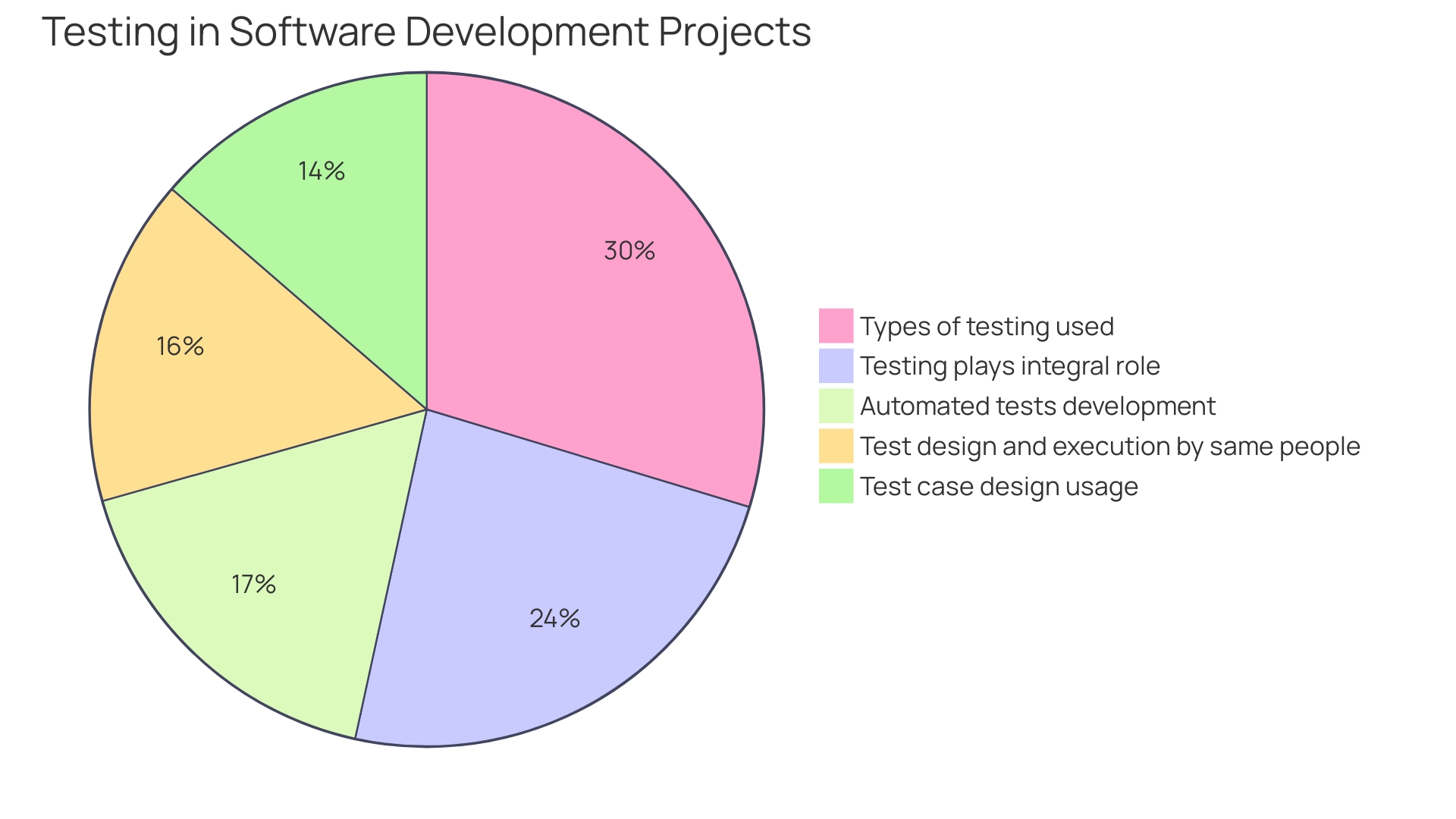
Tool 4: [Tool Name]
Tool 4 stands out in the realm of REST API testing with its robust scripting capabilities and comprehensive approach to test data management. For efficiency enthusiasts, this tool is a game-changer, offering the ability to meticulously monitor API performance in real-time, thereby streamlining the testing process and promptly pinpointing bottlenecks in API endpoints. By leveraging Tool 4's advanced features, teams can enhance their testing strategies, akin to how Bosch employs digital twins to optimize their SOFC systems, ensuring high efficiency and performance over time.
Moreover, it aligns with the principles of TotalEnergies Digital Factory, where APIs are the linchpin in modernizing legacy systems, emphasizing the critical role of dependable testing tools in today's digital transformation efforts. The effectiveness of Tool 4 is further underscored by the plethora of companies, including tech giants like Microsoft, that rely on leading tools for ensuring their software's reliability. As functional testing is crucial in verifying an application's performance against predefined requirements, Tool 4 serves as an invaluable asset, potentially reducing the typical software failure rate significantly.
Tool 5: [Tool Name]
APIs, or Application Programming Interfaces, are pivotal in modern software development, facilitating communication and data exchange between systems. To verify their reliability and performance, robust testing is mandatory. Among the array of tools available, Tool 5 distinguishes itself through its commitment to simplicity and efficacy, offering a straightforward interface that allows for the swift creation of test cases.
It integrates smoothly with prevalent development environments, empowering developers to validate API functionalities with precision.
As the software failure rate hovers between 50-80%, functional testing becomes indispensable, ensuring all functions perform as intended. Tool 5 emerges as an exemplary resource, addressing the diverse needs of functional testing. Whether testing web, mobile, or desktop applications, Tool 5 answers the critical questions of what and how to test, thanks to its intuitive design that caters to both novice and experienced users.
Moreover, in the realm of automated testing, Tool 5 stands out with its capabilities: from constructing and sending HTTP requests with various methods and parameters to displaying server responses for meticulous analysis. This aligns with the insights from industry leaders and the evolution of testing practices, where functional API testing solutions must be straightforward, visually engaging, and powerful enough to handle complex tasks effortlessly. By fulfilling these criteria, Tool 5 proves to be a quintessential ally in an era where quality software must be delivered rapidly to meet Agile and DevOps demands.
Tool 6: [Tool Name]
In the competitive landscape of software development, where APIs form the backbone of modern digital solutions, Tool 6 emerges as a cutting-edge REST API testing tool. Designed to cater to the intricate needs of software testing, Tool 6 encompasses a comprehensive suite of features that ensure APIs deliver on their promised capabilities. With its robust test case management system, users can meticulously organize and manage their testing scenarios, bolstering the software testing lifecycle.
Tool 6 elevates the testing process with its advanced data-driven testing options. This allows teams to feed a variety of data sets into API tests, simulating real-world conditions and validating API behavior across multiple scenarios. The tool's detailed reporting functionalities offer clear insights into test outcomes, pinpointing successes and areas for improvement with precision.
Integration is a pivotal aspect of Tool 6, which seamlessly connects with prevalent CI/CD platforms. This harmony with continuous integration and deployment processes embeds API testing into the very fabric of the development workflow, facilitating a more streamlined and efficient path from development to deployment.
As the digital arena evolves with rapid releases and heightened quality expectations, the selection of an API testing tool becomes a strategic decision. The ideal tool should be intuitive enough for newcomers yet powerful for seasoned professionals, an equilibrium that Tool 6 strikes with finesse. Its user-friendly interface ensures that even those new to API testing can harness its full potential without extensive training, driving productivity and fostering an environment of innovation.
The significance of Tool 6 is further underscored by the insights of industry experts and the experiences of leading organizations. For instance, TotalEnergies' Digital Factory, a subsidiary focused on spearheading digital transformation, relies heavily on APIs to modernize its systems. In such contexts, Tool 6's capabilities can be instrumental in ensuring APIs are reliable, secure, and aligned with business objectives.
In summary, Tool 6 stands as a beacon of efficiency in the realm of API testing. With its rich features and seamless integrations, it empowers developers and QA professionals alike to ensure their APIs meet the high standards of today's technology-driven world.
Tool 7: [Tool Name]
Effective API documentation serves as the blueprint for developers to understand how to interact with an API efficiently. A stellar example of such documentation would detail the structure of the API's endpoints, including clear descriptions, request/response examples, authentication methods, and error handling procedures.
- Request Construction & Sending: The documentation should exemplify how to formulate and dispatch HTTP requests, demonstrating various methods and parameters.
- Response Viewing & Analysis: It should present a clear-cut way to view and analyze server responses, showcasing the response status, headers, and body content.
For instance, consider an API documentation section that highlights the endpoint for retrieving user details:
GET /users/{id}
This section would elaborate on the request method (GET), endpoint path (/users/{id}), and the required path parameter (user ID). It would also include a sample request and a corresponding response:
Request:
GET /api/users/123
Host: example.com
Authorization: Bearer your_access_token
Response:
HTTP/1.1 200 OK
Content-Type: application/json
{
"id": 123,
"name": "John Doe",
"email": "john.doe@example.com"
}
Moreover, the documentation should cover authentication techniques, such as token-based authentication, and describe common errors with examples to aid in troubleshooting. This level of detail not only promotes developer productivity but also enhances the overall user experience by simplifying API integration and usage.
Tool 8: [Tool Name]
Understanding the intricacies of REST API testing is pivotal for crafting software that is not only robust and reliable but also meets the stringent demands of modern businesses. Tool 8 emerges as an indispensable resource, designed to cater to the multifaceted needs of API testing. With its intuitive interface, creating and managing test cases becomes a streamlined affair, thus enhancing productivity and fostering a more efficient testing cycle.
The depth of Tool 8's functionality can be likened to the engineering prowess demonstrated by Bosch in their development of the SOFC system. Much like Bosch's digital twin technology that optimizes performance over the SOFC system's lifetime, Tool 8's robust test data management system ensures that your API's functionality can be fine-tuned to perfection.
In the realm of digital transformation, as seen with TotalEnergies Digital Factory, API testing is the cornerstone of modernizing legacy systems. Tool 8 aligns with this paradigm by providing seamless integration capabilities with popular test management tools, thereby propelling the digital transformation journey.
Furthermore, the importance of functional testing cannot be overstated – it is as critical to the success of a software project as the technological innovation is to companies like the leading global technology consultancy mentioned in the context. Functional testing tools like Tool 8 are not only about detecting failures but also about ensuring that each function of the software aligns with the user's expectations, as articulated in the various points and quotes provided.
To encapsulate the significance of Tool 8 in the landscape of software testing, consider the statistics highlighting the prevalence of software failures and the role of functional testing in mitigating these issues. API testing automation tools, such as Tool 8, are essential for developers to validate APIs against functional, performance, and security standards, which is increasingly critical as APIs become more central to software development.
In conclusion, Tool 8 stands out as a premier choice for developers who seek to not only meet but exceed the demands of quality assurance in software development. By embracing Tool 8, you are empowered to navigate the complex waters of API testing with the assurance of precision, efficiency, and excellence.
Tool 9: [Tool Name]
Tool 9 stands out as an exceptional REST API testing solution, designed to tackle the diverse challenges faced in software quality assurance. It's not just any tool; it’s a robust ally for developers and testers aiming to uphold high-performance standards in web applications. By facilitating complex test scenarios, Tool 9 empowers you to craft meticulous test cases that mirror real-world usage, ensuring your application behaves as expected under various conditions.
Emphasizing the importance of proactive incident management, Tool 9 comes equipped with capabilities for performance and stress testing. This aligns with industry best practices for API design and development, aiming to minimize the cost and impact of API anomalies by preventing them before they occur. Its powerful test data management system allows for the generation of diverse test scenarios, providing a solid foundation to address all functionalities comprehensively.
Furthermore, Tool 9’s detailed test result analysis offers clear insights, making it easier for teams to pinpoint issues and optimize the API for better performance and reliability. The significance of such a tool is highlighted by the fact that, according to studies, the software failure rate can range from 50-80%. Tool 9 is engineered to mitigate this failure rate significantly.
As part of a suite of tools shaping the efficiency and precision of software testing, Tool 9 is essential for ensuring that your web application is secure, bug-free, and delivers a smooth user experience across all devices and supported browsers. It is a testament to the commitment to ethical corporate practices and social responsibility in the tech community, ensuring that applications not only meet technical standards but also contribute positively to a technology-driven world.
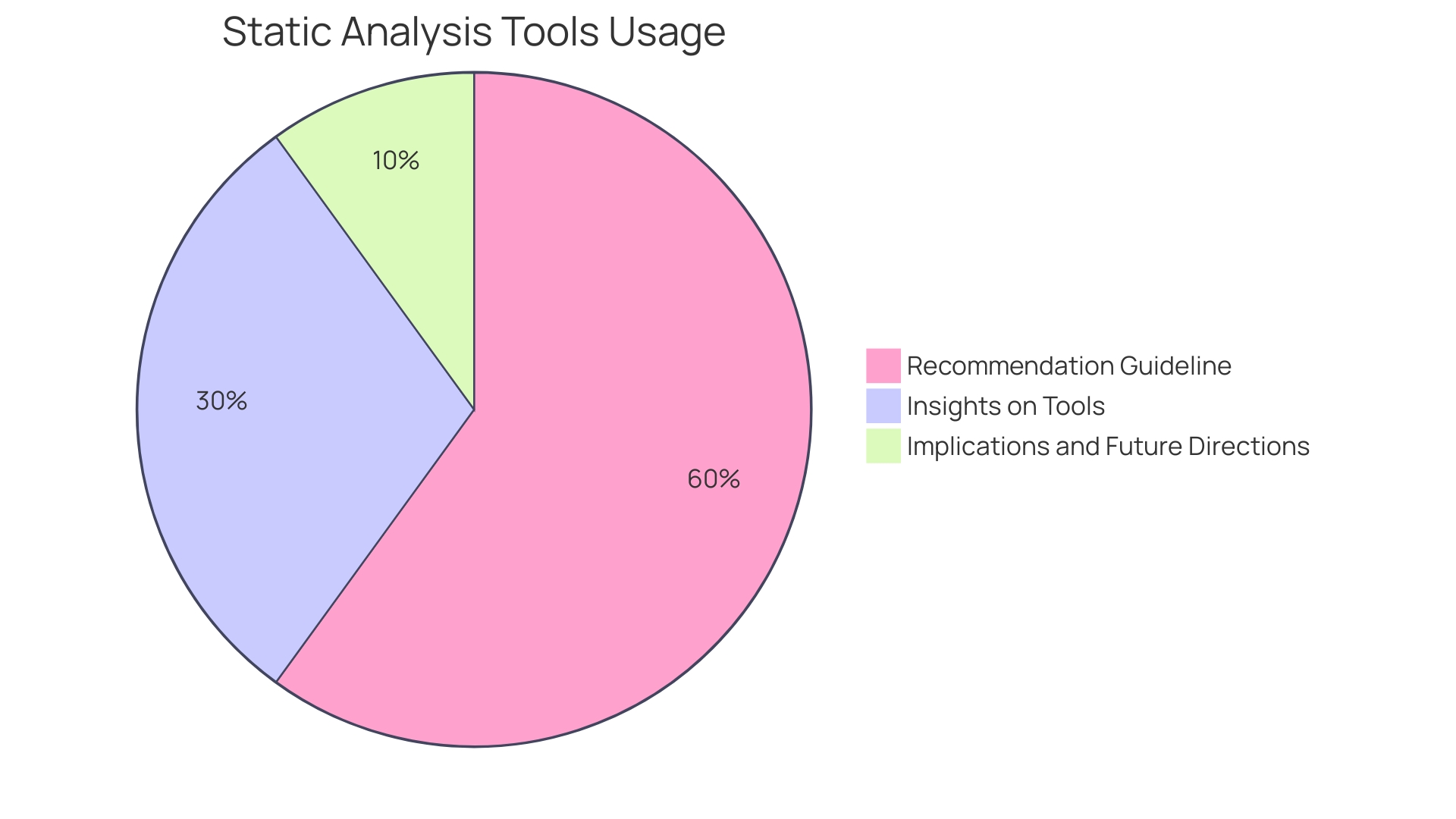
Tool 10: [Tool Name]
When delving into the realm of software development, we must acknowledge the pivotal role that APIs—Application Programming Interfaces—play in creating an interconnected digital ecosystem. They're the unsung heroes that seamlessly fetch data and allow different software applications to communicate effectively. Yet, the complexity of APIs necessitates diligent testing to ensure their flawless operation and security.
Enter the domain of API testing, a critical health check for your software, ensuring all the APIs perform optimally.
API automation testing tools are indispensable for developers and testers alike, with tools like Postman leading the charge, known for its user-friendly interface and robust features. These tools automate the testing process, simulating user interactions with APIs to validate their performance against predefined requirements. A testing tool like Tool 10 steps into this arena with a promise of simplifying the testing workflow, boasting an intuitive interface that eases test case creation and offers detailed analyses of test results.
In the competitive landscape of web application testing, where ensuring a bug-free, secure, and user-friendly experience is paramount, choosing the right testing tool can be overwhelming. It's essential to consider factors like the type of application (web, mobile, or desktop), the operating systems involved, and the functionalities required. Tool 10 emerges as a contender in this space, aiming to enhance the efficiency of the testing cycle, which can be flexibly adjusted to suit different scenarios.
With the evolution of software development, the importance of API testing automation tools has surged, as evidenced by a comprehensive review of 21 top tools. These tools are tailored to assess APIs without a visual interface, focusing on the underlying functionality, performance, and security. Tool 10, by facilitating efficient testing, positions itself among these critical tools, helping developers identify and rectify any issues in API endpoints, thereby contributing to the robustness and reliability of software applications.
In conclusion, Tool 10 is not just another tool in the developer's arsenal; it is a user-friendly gateway to ensuring the health and performance of the vital APIs that power today's software applications.
Additional Resources
In the realm of digital transformation, the importance of Application Programming Interfaces (APIs) cannot be overstated. They are essential for creating seamless communication between services, and their role is magnified in API-first design strategies. Recognizing this, the TotalEnergies Digital Factory (TDF) has made APIs a cornerstone of their operational strategy, leading to the development of over 80 digital solutions since 2020.
With such a reliance on APIs, it's crucial to ensure they are reliable and secure, as they underpin critical business processes.
API testing is a pivotal practice in maintaining the quality of these interfaces. It is a meticulous process that validates whether APIs meet the expected functionality, performance, and security standards. In light of recent cybersecurity reports, with 78% of cybersecurity teams experiencing an API-related incident in the last year, the urgency for robust API testing is clear.
For developers navigating the Java ecosystem, tools like RestAssured have become popular for testing RESTful APIs. RestAssured simplifies the interactions with HTTP-based APIs and is appreciated for its ease of use, allowing even beginners to efficiently write and execute tests. The endorsement of such tools by industry professionals, including those at TotalEnergies Digital Factory where 100% of developers acknowledge the collaborative ease brought by Postman, underscores their value.
To further enhance your understanding and skill in API testing, consider delving into the real-world applications and strategies employed by industry leaders. Engage with the series of articles focused on API testing, where each week will bring insights into frameworks like Cypress and Python, and discuss foundational concepts vital for effective API interaction. By examining case studies and keeping abreast with the latest news on API security, you can fortify your approach to API testing, ensuring your digital solutions are both robust and resilient.
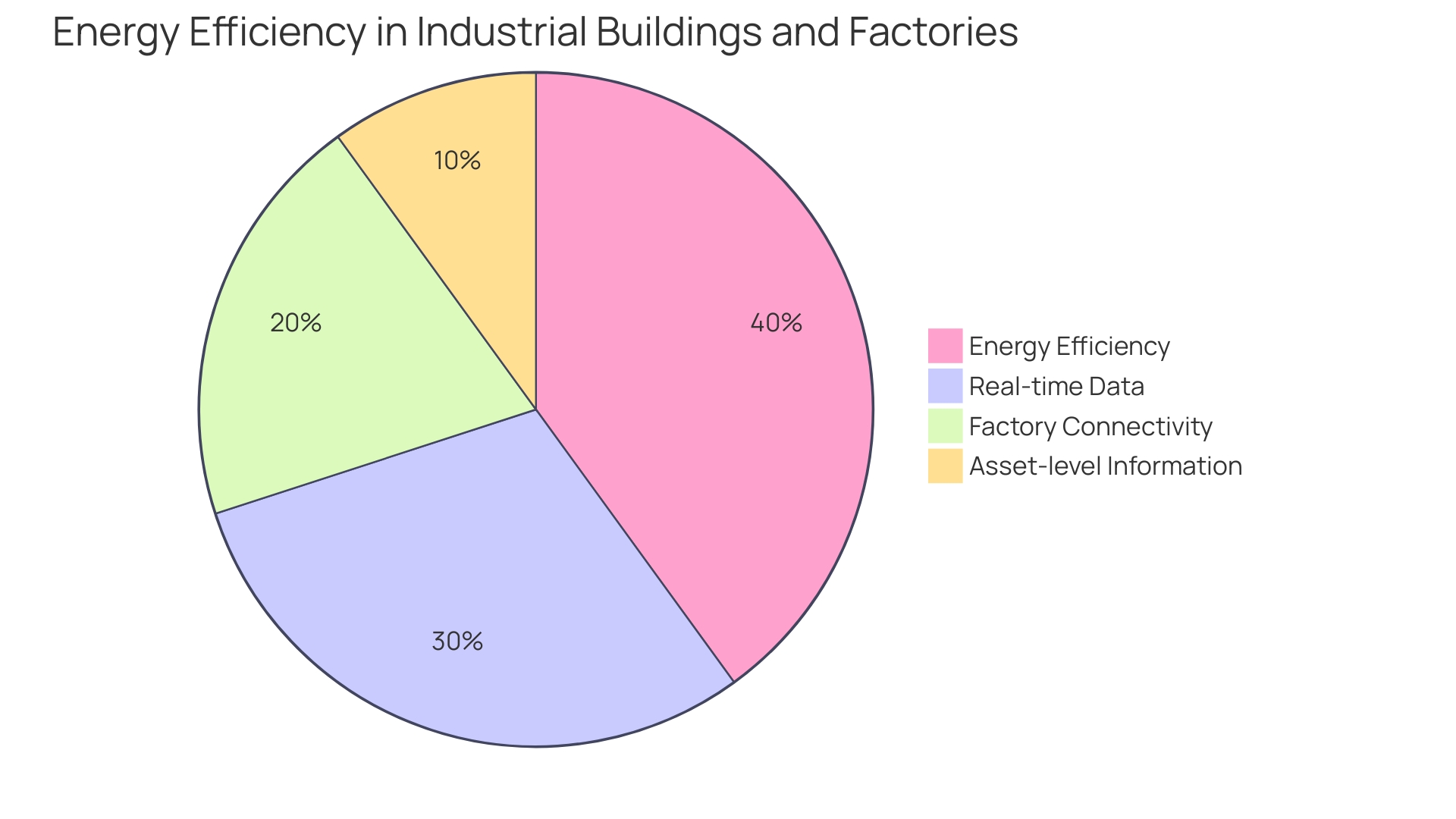
Conclusion
In conclusion, API testing is essential for ensuring the reliability, security, and performance of software applications. Tools like Postman streamline the testing process by automating test scripts and validating responses against expected outcomes.
API testing goes beyond functionality; it also assesses performance under varying loads, ensuring swift playback and scalability. This leads to an improved user experience and supports the growth of user bases without compromising speed or quality.
Leading companies like Adobe, JetBlue, FedEx, and Microsoft recognize the importance of robust API testing. They actively participate in tech communities and uphold ethical practices.
With the right approach and tools, API test automation significantly enhances API performance, security, and reliability. This ultimately leads to an improved user experience and ensures the smooth operation of software applications.
Choosing the right REST API testing tool is crucial for maximum efficiency and productivity. The tool should seamlessly integrate with the project's ecosystem, provide user-friendly features, and offer robust support. It should cater to unique testing demands, enhancing workflow and streamlining the testing experience.
In summary, tools like Postman offer comprehensive capabilities that optimize API performance. With the right tools and approach, API test automation enhances API reliability, security, and performance, resulting in an improved user experience and the seamless operation of software applications.
Frequently Asked Questions
Why is REST API testing important?
REST API testing is important to ensure that APIs, which are essential for seamless service integration and data exchange, are functioning correctly, securely, and can handle varying loads efficiently.
What is the purpose of REST API testing tools?
These tools automate the creation and execution of test scripts that use HTTP requests to interact with the API, helping to validate responses against expected outcomes and streamline the testing process.
What are some key features of Postman, a popular REST API testing tool?
Postman offers a user-friendly interface, the ability to construct and send various HTTP requests, clear visualization and analysis of server responses, and integration into CI/CD pipelines for ongoing assessment.
How do REST API testing tools benefit developers and organizations?
They enhance the performance, security, and reliability of APIs, which improves the overall user experience and ensures the smooth operation of software applications.
What factors should be considered when choosing a REST API testing tool?
Consider the tool's integration with your project's ecosystem, user-friendliness, documentation, support, and features that cater to your specific testing needs.
How has Postman evolved since its inception?
Postman began as a Chrome extension in 2012 and has evolved into a standalone application that addresses the challenges developers face with HTTP requests and responses.
Can REST API testing tools be integrated into existing workflows?
Yes, many REST API testing tools can be integrated into Continuous Integration/Continuous Deployment (CI/CD) pipelines for ongoing assessment of APIs.
What is the role of API testing in industries like healthcare?
API testing in healthcare ensures accuracy and quality, which are paramount for healthcare applications, especially for projects involving IoT.
What is an example of API testing's impact on a company?
TotalEnergies Digital Factory leverages API testing to modernize legacy information systems and has developed over 80 digital solutions across 25 countries.
How does automated testing contribute to software development?
Automated testing is adopted by a significant portion of developers and is crucial for efficiency and reliability in software projects, reducing the software failure rate which can range between 50-80%.
Why is it important to have clear API documentation?
Effective API documentation enables developers to understand and interact with an API efficiently, detailing request/response formats, authentication methods, and error handling.
How do REST API testing tools align with digital transformation strategies?
Testing tools are integral in modernizing legacy systems and ensuring that APIs are reliable, secure, and aligned with business objectives.
How prevalent are API-related incidents in cybersecurity?
According to recent reports, 78% of cybersecurity teams have experienced an API-related incident in the last year, highlighting the need for robust API testing.
What resources are available for improving API testing skills?
Engaging with articles, discussions, and case studies on API testing frameworks and security can enhance understanding and skills in effective API interactions.




